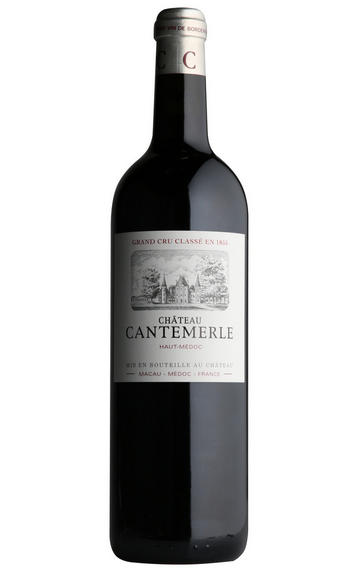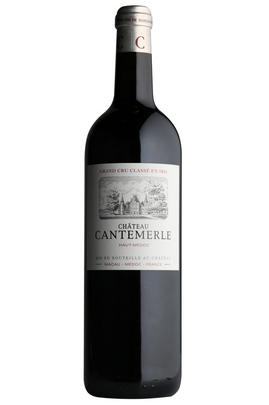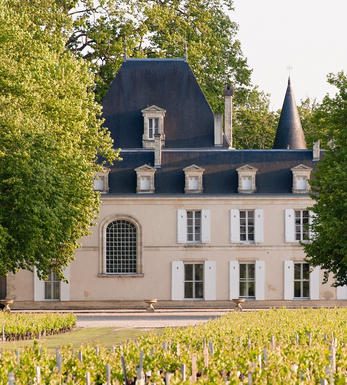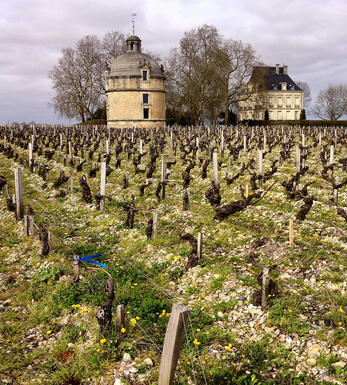
2021 Château Cantemerle, Haut-Médoc, Bordeaux

Critics reviews
The 2021 Cantemerle has a pleasant, cedar-inspired bouquet, the light black fruit gaining intensity with aeration. The palate is medium-bodied with grainy tannins and quite structured, revealing classic tobacco notes toward a finish of decent length. This will do fine as an early-drinking claret.
Neal Martin, vinous.com, (May 2022)
Bright dark fruit, well constructed with fresh acidities and a leafy, rose stem aspect the emphasies the Caberrnet. There is juice on the finish here, but hard tannins also, and it needs further softening over ageing. Tasted twice. 50hl/h yield, generous for the vintage, 40% new oak.
Drink 2026 - 2040
Jane Anson, janeanson.com (May 2022)
The 2021 Cantemerle is a very strong effort in a challenging year, offering up aromas of blackcurrants and plums mingled with hints of spice box, black truffle and loamy soil. Medium to full-bodied, fleshy and charming, it's supple and succulent, with a generous core of fruit and a saline finish. It's sure to number among the sleepers of the vintage.
William Kelley, Wine Advocate (Apr 2022)
65% Cabernet Sauvignon, 21% Merlot, 9% Cabernet Franc, 5% Petit Verdot. Cask sample.
Pleasantly aromatic with cassis and dark-fruit notes. Juicy and fresh, if a little lean, the tannins well-handled. The oak, though, is rather present and drying (prise de bois?). If it settles, this could improve.
Drink 2025 - 2035
James Lawther, jancisrobinson.com (May 2022)
About this WINE

Chateau Cantemerle
Ch. Cantemerle's woodland setting is amongst the most beautiful of any château in the Médoc. It is located in the far south of the region, almost on the outskirts of the city of Bordeaux. It is the first major property on the Médoc Route des Châteaux, north of Bordeaux.
Cantemerle has 94 hectares of vineyards, planted with Cabernet Sauvignon (60%), Merlot (30%), Cabernet Franc (6%) and Petit Verdot (4%). The wines are made under the guidance of consultant oenologist, Eric Boissenot, undergoing 12 months' ageing in French oak, of which 40% is new.
Cantemerle is a Cinquième Cru Classé, with approximately 400,000 bottles produced each year and a further 160,000 bottles of the property’s second wine, Les Allées de Cantemerle.

Haut-Medoc
Despite being as visually unprepossessing as the rest of the Médoc (despite its grandiose châteaux) this large red-wine appellation of Haut-Médoc is home to some of the world’s greatest wines. Its 4,500 hectares of vineyards form a largely continuous strip that follows the Gironde from St Seurin-de-Cadourne, just north of St Estèphe, to Blanquefort in the northern suburbs of Bordeaux.
All the great communes of the Left Bank fall within its boundaries: Margaux, St Julien, Pauillac and St Estèphe, as well as the up and coming Moulis and Listrac. These are labelled under their own, more illustrious and expensive appellation names. Châteaux labelled simply as Haut-Médoc rarely reach such heights, but nevertheless offer consistently good quality and offer some of the best value in Bordeaux.
Haut-Médoc wines tend to be firm and fine with generous fruit and a nice minerality – what many would consider ‘classic Claret’. They come from loftier vineyards and offer higher quality and more complexity than those labelled simply as ‘Médoc’. Almost all wines are a blend of the principal varieties – Cabernet Sauvignon, Merlot and Cabernet Franc – which helps producers hedge their bets if the slightly capricious climate causes one variety to fail. Small amounts of Petit Verdot, Malbec and even Carmenère are also used.
The higher proportion of sand and gravel to the south tends to produce finer wines, while the heavier clay and gravel north of Margaux yields sturdier examples. The best Haut-Médocs are found north of Ludon, a village just below Margaux. These include five classified Growths: Third Growth Ch. La Lagune, underperforming Fourth Growth Ch. la Tour Carnet and Fifth Growths Ch. Cantemerle, Ch. Camensac and Ch. Belgrave – as well as a number of fine Cru Bourgeois. Ageing ability varies but the lesser wines are usually delicious after three to four years, lasting around a decade, while the Cru Classés have a drinkability window of around six to 15 years.
Recommended Châteaux (labelled as Haut-Médoc): Ch. Beaumont, Ch. Belgrave, Ch. Cantemerle, Ch. Peyrabon

Cabernet Sauvignon Blend
Cabernet Sauvignon lends itself particularly well in blends with Merlot. This is actually the archetypal Bordeaux blend, though in different proportions in the sub-regions and sometimes topped up with Cabernet Franc, Malbec, and Petit Verdot.
In the Médoc and Graves the percentage of Cabernet Sauvignon in the blend can range from 95% (Mouton-Rothschild) to as low as 40%. It is particularly suited to the dry, warm, free- draining, gravel-rich soils and is responsible for the redolent cassis characteristics as well as the depth of colour, tannic structure and pronounced acidity of Médoc wines. However 100% Cabernet Sauvignon wines can be slightly hollow-tasting in the middle palate and Merlot with its generous, fleshy fruit flavours acts as a perfect foil by filling in this cavity.
In St-Emilion and Pomerol, the blends are Merlot dominated as Cabernet Sauvignon can struggle to ripen there - when it is included, it adds structure and body to the wine. Sassicaia is the most famous Bordeaux blend in Italy and has spawned many imitations, whereby the blend is now firmly established in the New World and particularly in California and Australia.


Buying options
Add to wishlist
Description
Cabernet Sauvignon 64%, Merlot 27%, Cabernet Franc 5%, Petit Verdot 4%
The property lies just south of Margaux, on light sandy soils, close enough to the river to have avoided the worst of the spring frosts. The terroir handled the heavy June rain well; getting the Cabernets fully ripe was more challenging. This shows in a slightly pinched finish; it may fill out with more time in oak. The bouquet is very pretty, and the palate is soft and creamy, with gentle red-fruit notes. There is plenty of attractive freshness; the wine will deliver some very pleasant, early-ish drinking. Drink 2024-2032.
Our score: 15/20
Berry Bros. & Rudd, April 2022
wine at a glance
Delivery and quality guarantee